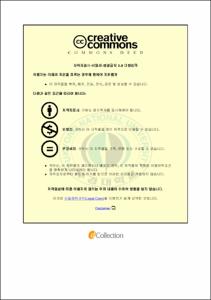Asimow 디자인 프로세스를 적용한 초등학교 디자인 교육 방법 및 평가 방안 연구
- Alternative Title
- Study on teaching and evaluation methods for design in elementary school applied with Asimow design process
- Abstract
- Study on teaching and evaluation methods
for design in elementary school applied
with Asimow Design process.
Kim Sun A
Graduate School of Education
Pukyong National University
Design Education
Abstract
The information age diversity, creativity and flexibility complexity, and is characterized by a non-prediction. To meet these demands the learner-centered education has been gradually expanded. Depending on the need for design education in elementary school arts curriculum designed to revive the area of the map attributes Asimow to apply the design process, design, education and elementary school students through the process-oriented model development should be achieved in education and sought have investigated.
Throughout this study, the following conclusions were reached.
Part of design education in school curriculum is recognized as an art-oriented activities have been made artifacts. Asimow applied to the design process, a systematic analysis of the design process of problem solving-based learning through a process of creative thinking and design are necessary to build human capacity.
Asimow apply the design process, design education through aesthetic experience of the learners in a variety of activities means the process is to configure the integrated education of student-centered education to realize the educational theory of constructivism have much to reflect will.
Design education in the elementary school curriculum evaluation process through the best solutions to problems that appear to be part of the design process was applied in the evaluation process.
Designing the learning process include academic preparation in the evaluation process, the introduction of evaluation and self-evaluation. Is the expansion of mutual evaluation. Benefits that can be imported into the assessment process as follows.
First, the learning goals, learning readiness assessments and make sure you know exactly determine the level of each student and teachers to design teaching methods accordingly, can be applied.
Second, through self-assessment to reflect on their learning activities and learning outcomes should allow themselves to recognize. Make improvements on some points which will be able to find myself thinking about driving and makes a good design activities.
Third, interactions between student assessment and evaluation activities through the Friends of the design and also reflect on their own well-that is an opportunity to learn about themselves. And looking at the teacher's position is also designed to raise human eye can have a chance.
Design of educational evaluation as part of a student-centered teaching style design to increase participation through education classes designed to build up the intensity and the social understanding of the culture and succeed, to advance to a holistic human development can help a little bit seems to be.
Elementary education, aesthetics and creativity, design, development, expression and intellectual development through a variety of problems in life, a reasonably correct perception by the human development can be creative.
In the actual course design, training hard for achieving the essential purpose of the next point, but Asimow applied to the design process consists of systematic training to the design of student-centered education system closer to a closer look would have expected.
- Issued Date
- 2010
- Awarded Date
- 2010. 8
- Type
- Dissertation
- Publisher
- 부경대학교
- Department
- 교육대학원 디자인교육전공
- Advisor
- 김명수
- Table Of Contents
- 목차
I. 서론 1
1. 연구의 목적 및 필요성 1
2. 연구의 내용 및 방법 2
3. 제한점 3
II. 이론적 배경 4
1. 디자인 4
가. 디자인 개념 4
나. 디자인 조건 5
2. 초등학교 디자인 교육 7
가. 초등학교 디자인 개념 7
나. 초등학교 디자인 목적 및 필요성 9
3. 모리스 애시모(M. Asimow) 디자인 프로세스 10
가. 디자인 프로세스 10
나. 모리스 애시모(M. Asimow) 디자인 프로세스 11
4. 디자인교육 교수방안을 위한 구성주의 13
III. 초등학교 디자인 교육 현황 18
1. 초등학교 디자인 교육과정의 분석 18
2. 현 초등학교 교과서 디자인 교육과정 분석 20
3. 초등학교 디자인 교육 문제점 24
4. 초등학교 디자인 교육 방법 및 평가 방향 25
가. 초등학교 디자인 교육 방향 25
나. 초등학교 디자인 교육 평가 방향 28
IV. 디자인 교수방안 및 평가 방안 31
1. 애시모(M. Asimow)디자인 프로세스를 적용한 디자인 수업 모형 31
가. 문제 인식 33
나. 문제 해결방법 탐색 33
다. 해결안 실행 및 평가 33
라. 평가를 통한 해결안 보완 수정 34
마. 통합적 사고 34
2. 디자인 지도계획 및 평가 안 34
가. 형과 색이 만나면 36
나. 예술적 경험을 미술로 42
다. 나도 그림책 작가 49
라. 캐릭터는 내 친구 55
3. 교사의 역할 60
V. 결론 61
참고 문헌 63
- Degree
- Master
- Files in This Item:
-
-
Download
 Asimow 디자인 프로세스를 적용한 초등학교 디자인 교육 방법 및 평가 방안 연구.pdf
기타 데이터 / 22 MB / Adobe PDF
Asimow 디자인 프로세스를 적용한 초등학교 디자인 교육 방법 및 평가 방안 연구.pdf
기타 데이터 / 22 MB / Adobe PDF
-
Items in Repository are protected by copyright, with all rights reserved, unless otherwise indicated.